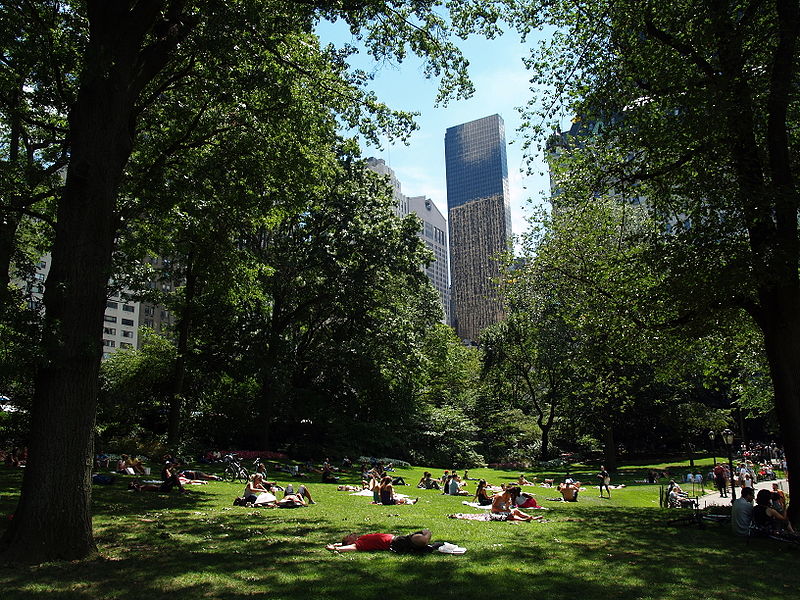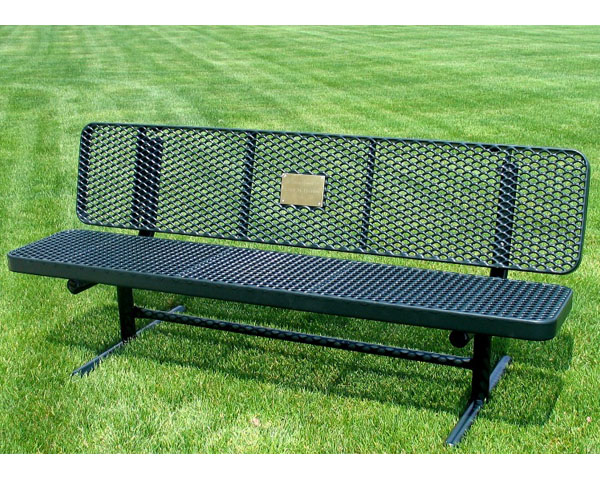Picnic tables, park benches, Frisbees, jogging, dogs or anything else that gets you into a park will improve a person's mental well-being, according to an extensive study recently conducted by a British university. The research team from the European Centre for Environment and Human Health and the University of Exeter analyzed data gathered over 18 years in a yearly survey of 10,000 people. The annual study is called the British Household Panel Survey and is distributed to a massive base of United Kingdom residents. The General Health Questionnaire asks a wide and extensive range of questions from income, marital status, health, family size, life satisfaction, etc. Using longitudinal data combined with statistics pulled from targeted areas, the researchers discovered that urbanites who live near green spaces reported feeling better than the general population overall. They were also able to track people who moved over a five year period and how their moods changed compared to their proximity to green spaces. Those close to parks or woodlands not only showed lower scores for stress but also higher scores for happiness. Their findings might appear obvious at first. Of course, it's great to live near a park. But this is one case where experts were actually able to gather hard evidence indicating there is a documented lift in the psyche of people who frequent open spaces. They were also able to compare their findings with people who had experienced major and positive life-changing events such as getting married, finding a job or even winning some money in the lottery. "The trouble with all those things is that within six months to a year, they are back to their original baseline levels of well-being," said Dr. Matthew White, an environmental psychologist who was part of the research team. "So these things are not sustainable. They do not make us happy in the long-term." But for those living near a park, the increase in positive emotions remained higher over the long term. White explained "What you see is that even after three years, mental health is still better, which is unlike many of the other things that we think will make us happy." To put the data in perspective, he said they calculated living near green spaces had an impact that was about 30% of the boost people experience when they are first married and about 10% of the lift in spirits for people who acquired jobs recently. Here's another benefit that city officials will like when it comes to tax revenue - according to a study reported by the National Association of Realtors, living near a park increases home values. Researchers checked more than 16,000 homes in Portland and found that homes within 1,500 of a park were priced 8% to 20% higher on average than similar homes further away. That means higher tax valuations which means a return on investment for a city that creates a park. The other benefit of a greener environment is the ability for people to make better decisions and react less negatively to challenges at work or in the home. "There is evidence that people within an area with green spaces are less stressed and when you are less stressed you make more sensible decisions and you communicate better," White observed. White and his team want to drill down deeper into the data to see if they can determine that living in greener areas actually has an effect on marriages or other aspects of people's lives. "I am not going to say it is the magic pill that cures all marriage problems, of course it is not. But it may be the (factor) that helps tip the balance towards making more sensible decisions and having more adult conversations," White said. Unfortunately, picnic tables and park benches were not included in the study. But, you do have to admit, if you want people to spend more time with Mother Nature, you should provide plenty of places for them to sit. It's kind of a downer planning to visit an open area and then when you get there, discovering that all the picnic tables and park benches are taken. Also it's not fun to see a seasonal slice of nature, whether it's a maple tree changing colors or flowers starting to bloom, and not have a place to sit for a few minutes and savor the moment. There's a bigger picture here. City officials, community leaders, park managers, urban planners and others might take notice there is now documented proof that the more green spaces they can provide to the public or the more ways they can make parks a better experience, the more content their constituents will be. The study is a great reference that could be included in all conversations about planning and budgets. It's certainly easier and less expensive to do than building a high-speed rail line or a new bridge. Same goes for company owners, facility managers, school administrators - give people a welcome garden area where they can hang out and absorb the benefits of sunshine, fresh air and green grass. Get people outdoors and under a tree and they will be happier, even if only in a small way. Therefore, savvy leaders and policy-makers should provide more opportunities to do that and educate people on why they should spend more time outdoors. The beneficial effect of providing green spaces is no longer just an opinion or something nice to do. The benefit is a proven, scientific fact.  Lower Central Park Photo by David Shankbone
Lower Central Park Photo by David Shankbone
 Picnic table in a park that meets ADA requirement
Picnic table in a park that meets ADA requirementPicnic tables in a park offer refuge and way to recharge
 Memorial park benches can provide more seating for budget-strapped park
Memorial park benches can provide more seating for budget-strapped park
Sitting on Picnic Tables or Park Benches in Green, Open Spaces Can Make You Happier According to New Study
Posted:
September 30, 2014


